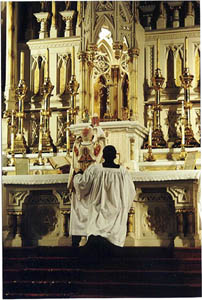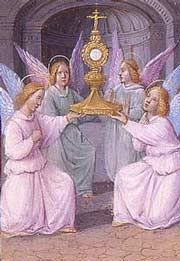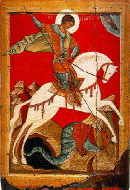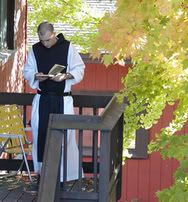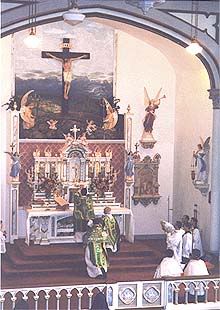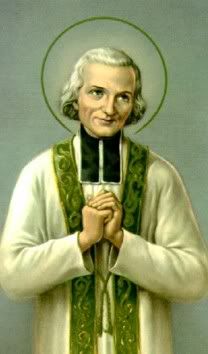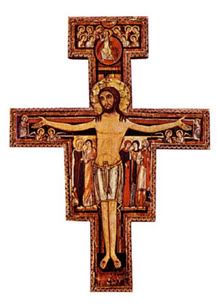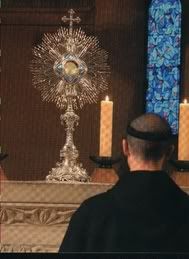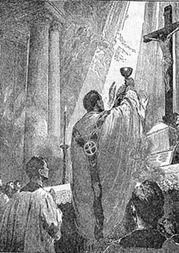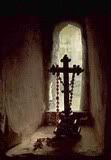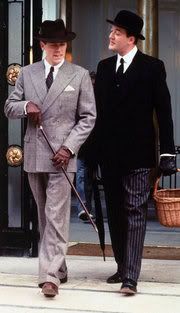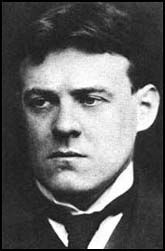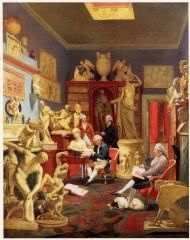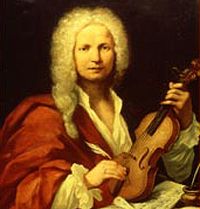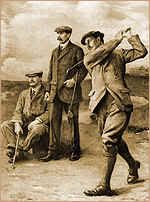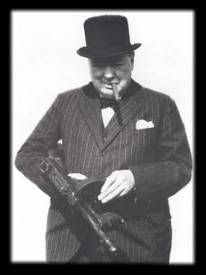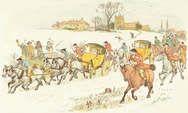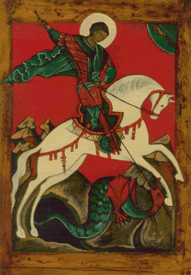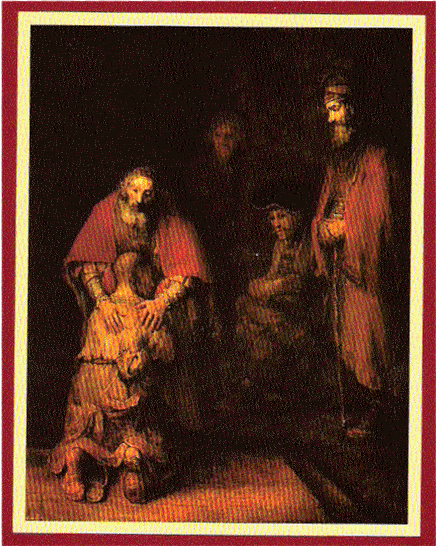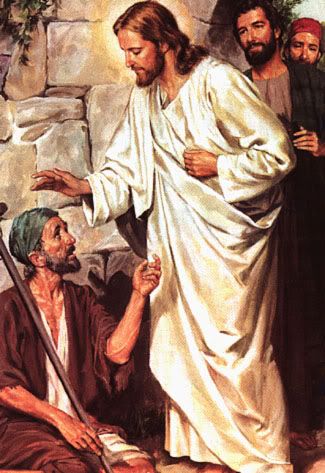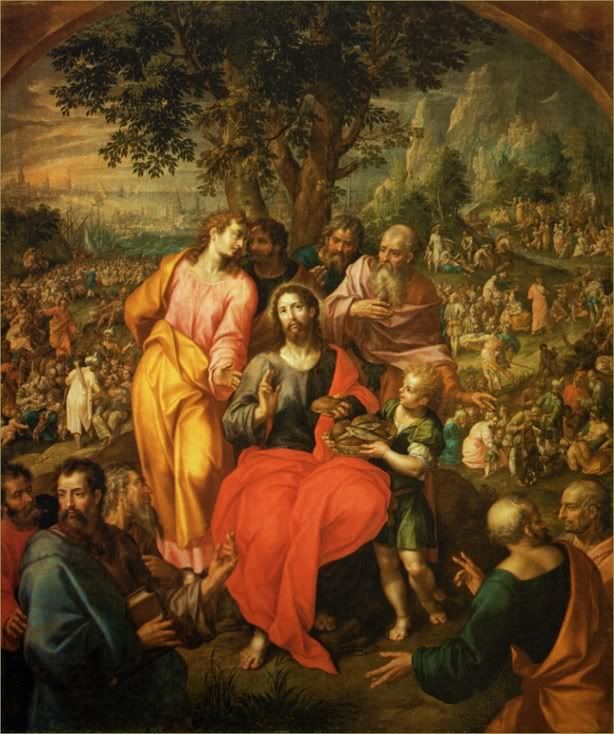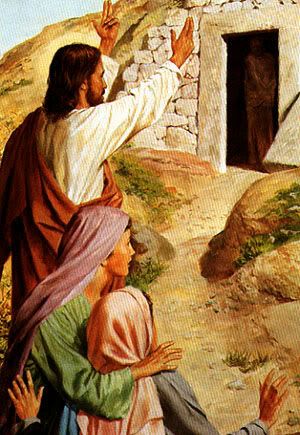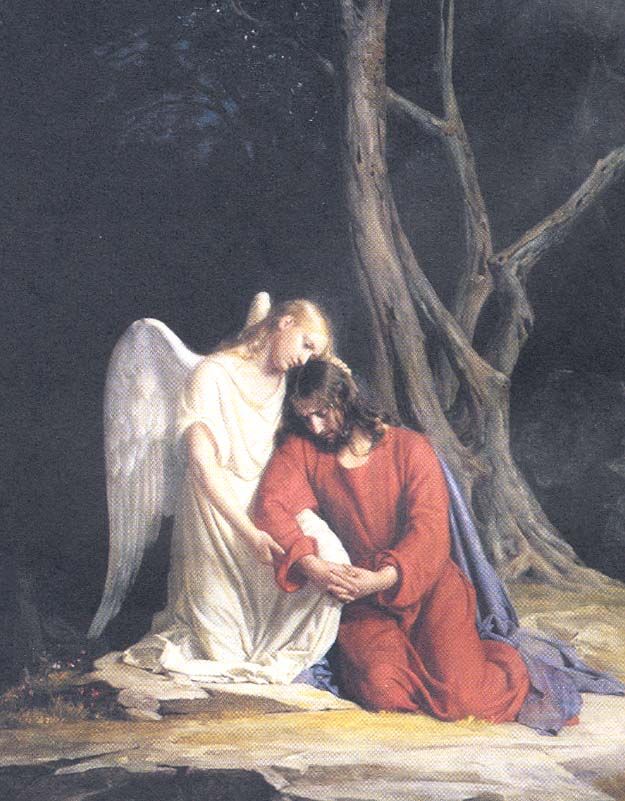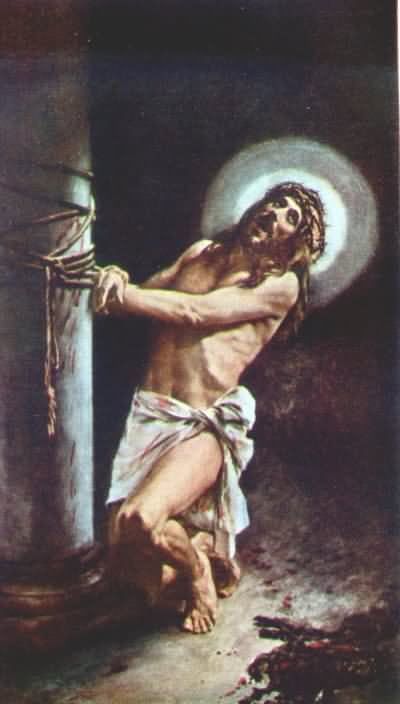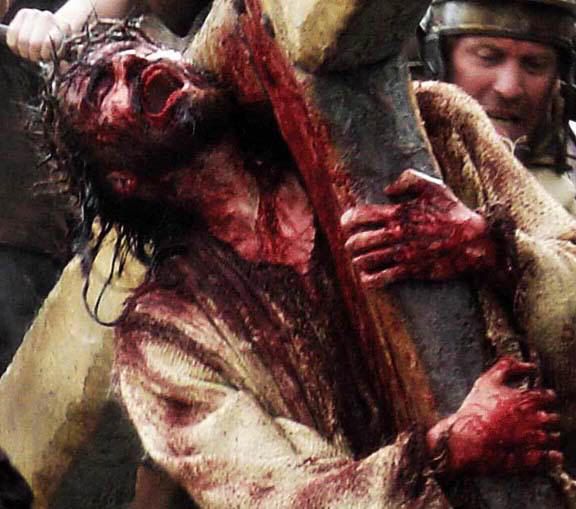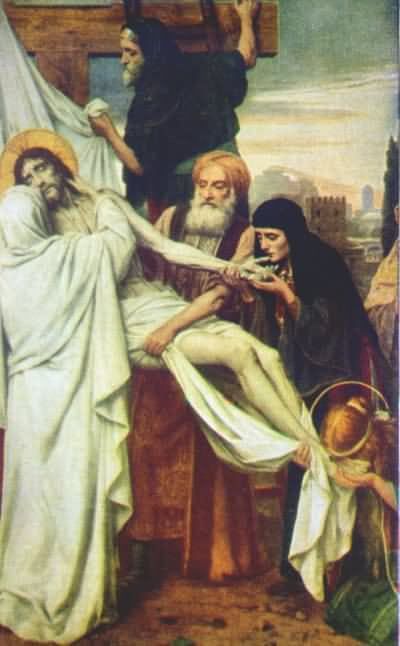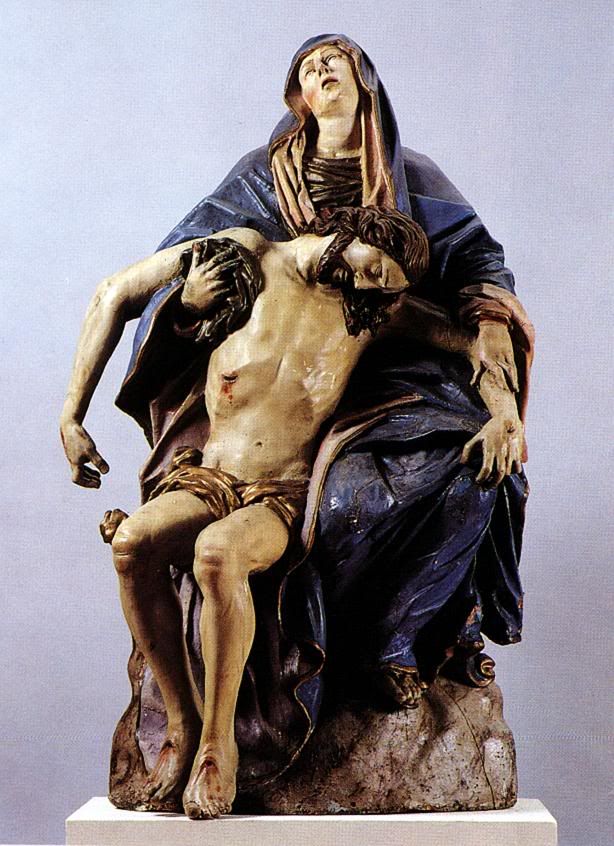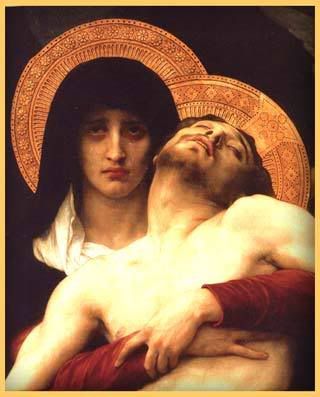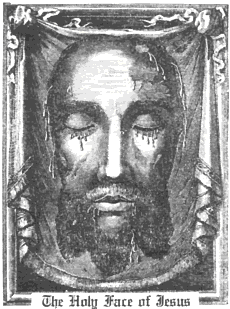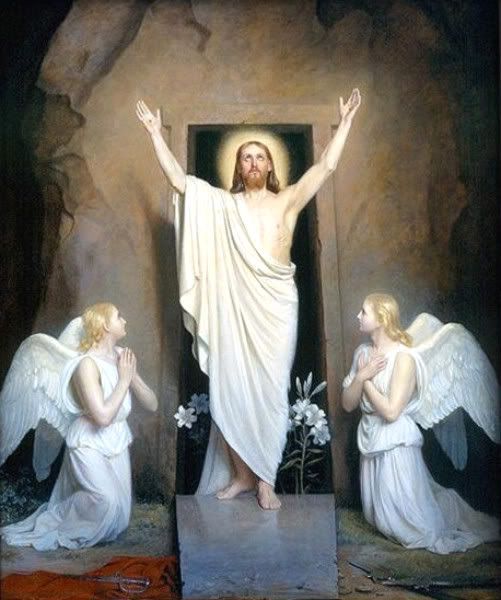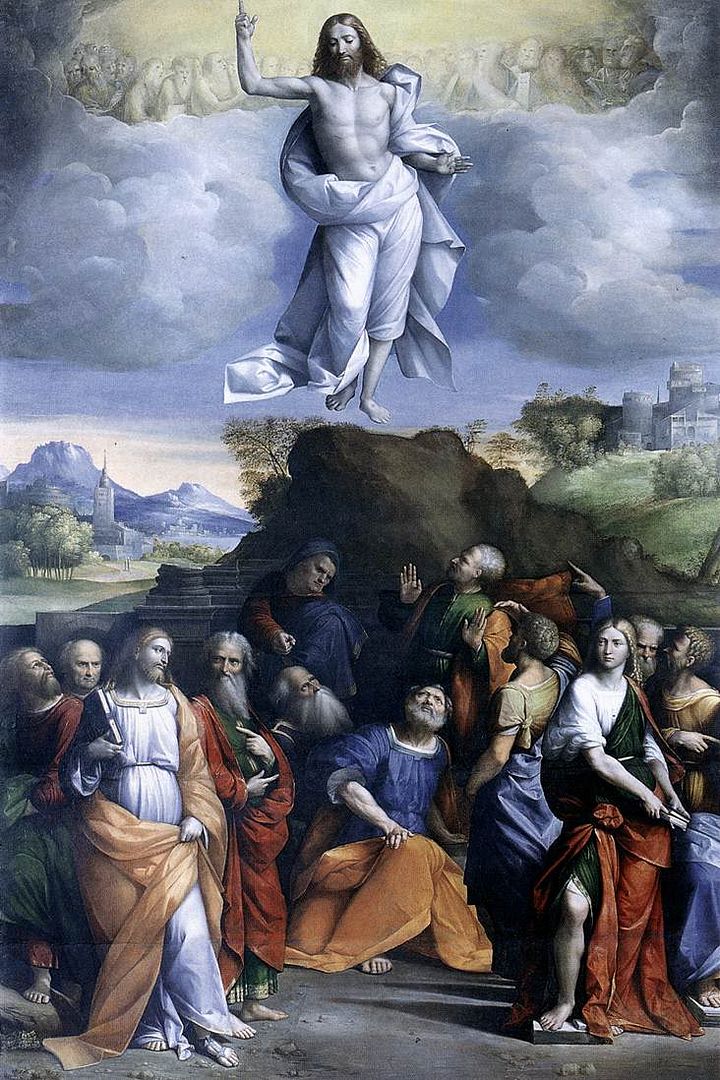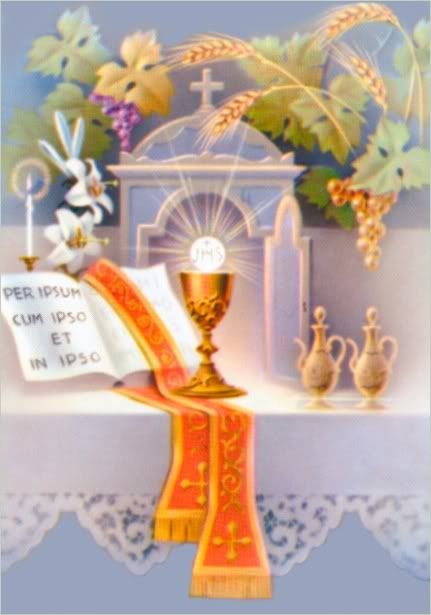Saturday, February 21, 2004
Wodehouse Conservatives
Mark Sullivan at Irish Elk calls our attention to a Weekly Standard piece by David Skinner discussing why American conservatives like P.G. Wodehouse.
Skinner speaks of a sort of conservative dandyism that has no counterpart on the left. Characters like Bertie Wooster and Psmith appeal to this side of conservatism. It is a careful attention to clothes and their pedigree. I will confess to being one of this breed. Like the Washington staffer mentioned in the article, The Official Preppy Handbook is the guidepost for my wardrode. I deliberately wear what some might call "staid" ties, center-vent, natural shoulder, undarted suits of the best wools in very conservative patterns, shirts, even underwear and socks from Brooks Brothers and J. Press. And not the "evolving" Brooks Brothers, but the undying Ivy League look of the late '50s-early'60s that you can still sometimes find at "B-Squared".
This is not anything like the Queer Whatever thing where a bunch (couple? one?) of pooftas re-make a straight guy's wardrobe to help him to dress, well, like a faggot. No. No. No. The Queer Whatevers would be aghast, because conservative dandies where things that are out of fashion, well-made, timeless, and unaging. We conservative dandies couldn't care less about what is hip. In fact, unless fashion is involved in it's once-a-year-every-decade flirtation with traditional clothing for men, fashion and the conservative dandy have nothing in common.
The conservative dandy delights in suits that one's father might have worn. In fact, we sometimes wear our father's (or grandfather's) suits. After all, they are wonderfully made, durable garments.
I didn't inherit my wardrode. I've had to build it, lose it, find it unwearable as I've gained and lost weight, had to have the pants repaired for wear, but always cherished it. After all, I selected it very carefully. I used to spend hours every week in college and law school just shopping for ties. So I have a great deal of sympathy when Bertie is arguing with Jeeves about a pair of plus-fours, or a white dinner jacket.
Skinner is making a point that has been made before, in a 1980s American Spectator article the name of whose author escapes me now. The point is that conservatives, the guardians of tradition and traditional mores, naturally spend more time and effort being concerned with the appearance of things, including the sartorial appearance. It is a point worth keeping in mind.
Skinner speaks of a sort of conservative dandyism that has no counterpart on the left. Characters like Bertie Wooster and Psmith appeal to this side of conservatism. It is a careful attention to clothes and their pedigree. I will confess to being one of this breed. Like the Washington staffer mentioned in the article, The Official Preppy Handbook is the guidepost for my wardrode. I deliberately wear what some might call "staid" ties, center-vent, natural shoulder, undarted suits of the best wools in very conservative patterns, shirts, even underwear and socks from Brooks Brothers and J. Press. And not the "evolving" Brooks Brothers, but the undying Ivy League look of the late '50s-early'60s that you can still sometimes find at "B-Squared".
This is not anything like the Queer Whatever thing where a bunch (couple? one?) of pooftas re-make a straight guy's wardrobe to help him to dress, well, like a faggot. No. No. No. The Queer Whatevers would be aghast, because conservative dandies where things that are out of fashion, well-made, timeless, and unaging. We conservative dandies couldn't care less about what is hip. In fact, unless fashion is involved in it's once-a-year-every-decade flirtation with traditional clothing for men, fashion and the conservative dandy have nothing in common.
The conservative dandy delights in suits that one's father might have worn. In fact, we sometimes wear our father's (or grandfather's) suits. After all, they are wonderfully made, durable garments.
I didn't inherit my wardrode. I've had to build it, lose it, find it unwearable as I've gained and lost weight, had to have the pants repaired for wear, but always cherished it. After all, I selected it very carefully. I used to spend hours every week in college and law school just shopping for ties. So I have a great deal of sympathy when Bertie is arguing with Jeeves about a pair of plus-fours, or a white dinner jacket.
Skinner is making a point that has been made before, in a 1980s American Spectator article the name of whose author escapes me now. The point is that conservatives, the guardians of tradition and traditional mores, naturally spend more time and effort being concerned with the appearance of things, including the sartorial appearance. It is a point worth keeping in mind.
Thursday, February 19, 2004
Dale Price Shows Some Insight Into the Hutton/Mel Gibson Issue
New Link Added
Actually, I'm always tinkering with the links on this site. But I wanted to call your attention to this particular one. It is St. Alphonso Liguori's Stations of the Cross, the most used traditional text for this Lenten exercise.
My only regret is that this link is text only, with no illustrations of the stations. The St. Joseph Missals have always had good illustrations, but I have noticed that they have become almost microscopically small in the last few years. If anyone can find the same Latin-English stations on line with illustrations, let me know, and I'll link to that instead.
My only regret is that this link is text only, with no illustrations of the stations. The St. Joseph Missals have always had good illustrations, but I have noticed that they have become almost microscopically small in the last few years. If anyone can find the same Latin-English stations on line with illustrations, let me know, and I'll link to that instead.
John Allen Says We May See the New English Translation of the Mass This Summer
It has only been in the works for years. I love Allen's phrase "breakneck speed, at least in ecclesiastical terms." That is about the same speed as a tortoise on a moderately sluggish day.
This looks good, if the spineless American bishops don't gut it:
“Every word and concept presented in an original text must be fully accounted for within a translation, even when the language into which the text is being translated must be pushed beyond its normal limits of expression to do so.”
Specifically, the ratio translationis discourages “inclusive language” to avoid gender-specific terms as well as language considered less offensive to groups such as Jews, where such measures depart from the literal meaning of the text.
It says:
“It is unnecessary and inappropriate to alter biblical or liturgical texts simply because some might take offense at their wording, as for example in some biblical passages that have sometimes incorrectly been criticized as depicting the Jewish people in an unfavorable light. Such misunderstandings are rightly dispelled by proper catechesis rather than by unwarranted interventions upon the text itself. If a given liturgical text is seen to require change in order to avoid misunderstandings of this nature, such a change lies within the competence of the supreme authority of the church and not of the translator.” (p. 60)
The ratio translationis also discourages language that comes from Protestants or other non-Catholic groups:
“Given the long history of the Roman Rite which developed in part around certain divisions in the practice of the faith, seen most acutely in liturgical and credal language, translators must show great care in expressing the mysteries of the faith as understood in the Catholic tradition. As a result, traditional Catholic expression is not ordinarily rendered through language which belongs to other faith communities.” (p. 46)
One factor for good here is that the Holy Father wants this done, and done quickly with the stuff pretty much left the way the experts have done it. Since most of the American bishops are, at heart, company men (rather than independent-minded radicals, or genuine conservatives) the wish of the CEO may prompt them to approve it intact and get it into use quickly. But if the Holy Father dies before that can happen, all bets are off.
This looks good, if the spineless American bishops don't gut it:
“Every word and concept presented in an original text must be fully accounted for within a translation, even when the language into which the text is being translated must be pushed beyond its normal limits of expression to do so.”
Specifically, the ratio translationis discourages “inclusive language” to avoid gender-specific terms as well as language considered less offensive to groups such as Jews, where such measures depart from the literal meaning of the text.
It says:
“It is unnecessary and inappropriate to alter biblical or liturgical texts simply because some might take offense at their wording, as for example in some biblical passages that have sometimes incorrectly been criticized as depicting the Jewish people in an unfavorable light. Such misunderstandings are rightly dispelled by proper catechesis rather than by unwarranted interventions upon the text itself. If a given liturgical text is seen to require change in order to avoid misunderstandings of this nature, such a change lies within the competence of the supreme authority of the church and not of the translator.” (p. 60)
The ratio translationis also discourages language that comes from Protestants or other non-Catholic groups:
“Given the long history of the Roman Rite which developed in part around certain divisions in the practice of the faith, seen most acutely in liturgical and credal language, translators must show great care in expressing the mysteries of the faith as understood in the Catholic tradition. As a result, traditional Catholic expression is not ordinarily rendered through language which belongs to other faith communities.” (p. 46)
One factor for good here is that the Holy Father wants this done, and done quickly with the stuff pretty much left the way the experts have done it. Since most of the American bishops are, at heart, company men (rather than independent-minded radicals, or genuine conservatives) the wish of the CEO may prompt them to approve it intact and get it into use quickly. But if the Holy Father dies before that can happen, all bets are off.
Wednesday, February 18, 2004
Carnival About To Start
We are entering Carnival season, one last mad effort of meat eating and drinking intoxicating beverages before Lent starts. Collop Monday is next Monday. Shrove Tuesday or Fat Tuesday (Mardi Gras) is Tuesday. And of course it all comes to a crashing halt with Ash Wednesday. That is a seasonal pattern that is very much worth holding on to, even though we no longer run short of meat and wine, butter and cheese late in the winter. Unless you live it up a little in the next few days, how else will you feel the vast difference when the austerities of Lent are upon us?
I'm still planning on that program of lenten reading/prayer this week. Maybe tomorrow, all things being equal and the creek don't rise.
I'm still planning on that program of lenten reading/prayer this week. Maybe tomorrow, all things being equal and the creek don't rise.
The Dean Campaign: RIP
Gee, just six weeks ago, Dean had the endorsements of both Al Gore and Bill Bradley and seemed to be the inevitable Democrat nominee. Instead, he said a couple of stupid things, made a weird noise on national TV, and was sandbagged by Jane Fonda's friend John Forbes Heinz Kerry, whose campaign limo is a truck that says "Brinks" on the side.
Now Dean, after losing every primary and caucus so far, has dropped out of the race. This leaves Edwards, running a gentlemanly "I sure would like the vice presidential nomination" campaign.
But I don't think the millionaire whiplash willy will be Kerry's choice (even though a southern presence would be desirable, with all the yaddda yadda about Democrats needding to win southern states). I think he will go with DiFi, or Hilary. Only if both turn Kerry down will Edwards be considered.
Now Dean, after losing every primary and caucus so far, has dropped out of the race. This leaves Edwards, running a gentlemanly "I sure would like the vice presidential nomination" campaign.
But I don't think the millionaire whiplash willy will be Kerry's choice (even though a southern presence would be desirable, with all the yaddda yadda about Democrats needding to win southern states). I think he will go with DiFi, or Hilary. Only if both turn Kerry down will Edwards be considered.
Saint Simeon
From Catholic.org:
In St. Matthew's Gospel, we read of St. Simon or Simeon who is described as one of our Lord's brethren or kinsmen. His father was Cleophas, St. Joseph's brother, and his mother, according to some writers, was our Lady's sister. He would therefore be our Lord's first cousin and is supposed to have been about eight years older than He. No doubt he is one of those brethren of Christ who are mentioned in the Acts of the Apostles as having received the Holy Spirit on Pentecost. St. Epiphanius says that when the Jews massacred St. James the Lesser, his brother Simeon upbraided them for their cruelty. The apostles and disciples afterwards met together to appoint a successor to James as bishop of Jerusalem, and they unanimously chose Simeon, who had probably assisted his brother in the government of that church. In the year 66 civil war broke out in Palestine, as a consequence of Jewish opposition to the Romans. The Christians in Jerusalem were warned of the impending destruction of the city and appear to have been divinely ordered to leave it. Accordingly that same year, before Vespasian entered Judaea, they retired with St. Simeon at their head to the other side of the Jordan, occupying a small city called Pella. After the capture and burning of Jerusalem, the Christians returned and settled among the ruins until the Emperor Hadrian afterwards entirely razed it. We are told by St. Epiphanius and by Eusebius that the church here flourished greatly, and that many Jews were converted by the miracles wrought by the saints. When Vespasian and Domitian had ordered the destruction of all who were of the race of David, St. Simeon had escaped their search; but when Trajan gave a similar injunction, he was denounced as being not only one of David's descendants, but also a Christian, and he was brought before Atticus, the Roman governor. He was condemned to death and, after being tortured, was crucified. Although he was extremely old - tradition reports him to have attained the age of 120 - Simeon endured his sufferings with a degree of fortitude which roused the admiration of Atticus himself. His feast day is February 18th.
In St. Matthew's Gospel, we read of St. Simon or Simeon who is described as one of our Lord's brethren or kinsmen. His father was Cleophas, St. Joseph's brother, and his mother, according to some writers, was our Lady's sister. He would therefore be our Lord's first cousin and is supposed to have been about eight years older than He. No doubt he is one of those brethren of Christ who are mentioned in the Acts of the Apostles as having received the Holy Spirit on Pentecost. St. Epiphanius says that when the Jews massacred St. James the Lesser, his brother Simeon upbraided them for their cruelty. The apostles and disciples afterwards met together to appoint a successor to James as bishop of Jerusalem, and they unanimously chose Simeon, who had probably assisted his brother in the government of that church. In the year 66 civil war broke out in Palestine, as a consequence of Jewish opposition to the Romans. The Christians in Jerusalem were warned of the impending destruction of the city and appear to have been divinely ordered to leave it. Accordingly that same year, before Vespasian entered Judaea, they retired with St. Simeon at their head to the other side of the Jordan, occupying a small city called Pella. After the capture and burning of Jerusalem, the Christians returned and settled among the ruins until the Emperor Hadrian afterwards entirely razed it. We are told by St. Epiphanius and by Eusebius that the church here flourished greatly, and that many Jews were converted by the miracles wrought by the saints. When Vespasian and Domitian had ordered the destruction of all who were of the race of David, St. Simeon had escaped their search; but when Trajan gave a similar injunction, he was denounced as being not only one of David's descendants, but also a Christian, and he was brought before Atticus, the Roman governor. He was condemned to death and, after being tortured, was crucified. Although he was extremely old - tradition reports him to have attained the age of 120 - Simeon endured his sufferings with a degree of fortitude which roused the admiration of Atticus himself. His feast day is February 18th.
Tuesday, February 17, 2004
Some Monastic Wisdom
Monasticism has been much in my mind for the last six months. I've been very interested in it since college, when I minored in medieval studies and was presented with reading about the great medieval monasteries, especially that connected with Durham Cathedral. And I have been exploring the topic anew lately.
I have come across much that I don't like, but also much that I do. Monasticism has been hit with the same sort of liberalizing wave that has hit the rest of the Church. In fact, it is possible to say that no where have the changes been greater than in the monasteries of the West. And a big part of the change is something I think, on the whole, rather harmful, the integration of Eastern spirituality and TM practices into Catholic cloistered life.
The Cistercians have been leaders in this area, though I sense that there is now some desire to back away from all that a little bit and, while not rejecting the work of the previous generation, and get serious about being Roman Catholic monks once again, instead of traipsing along with Buddhists chanting Kumbaya. Merton, of course, has been the big name in the blending of East and West, but Father Basil Pennington and Father Thomas Keating from our own Trappist monastery in Spencer have also been leaders in this. One (Keating) is no longer associated with Spencer (and he was its abbot for 20 years), and Father Pennington, at my last reading, was living in China, though still associated with the abbey.
And by no means is everything that they have written harmful. I read Merton's Praying the Psalms with great sympathy and profited from it. I bogged down in boredom with The Seven Storey Mountain, though and could not get past page 80 or so. Pennington's Praying By Hand (about the Rosary) and A Place Apart (about bringing the peace of the monastery to any place you happen to be in) are both wonderful, if a little too full of the liberalism of the 1980s. And the "Centering Prayer" technique that Father Keating champions can be seen as merely a development of the "Jesus" prayer, which has deep roots in Catholic devotions.
But on the whole, I have my doubts. I realize that this is hitting most of you from the blind side. This is inside baseball completely removed from our everyday lives. Hardly anyone thinks about the cloistered life who is not living it or figuring out if they are called to it. We have enough problems with pastors and parish councils and archdiocesan staffs overrun with radicals without worrying about those who live apart in the cloister.
A very close and old friend of mine named Jeremy Lister is considering such a move while going through a really rough time. And I have been studying the monastic landscape along with him these past months.
What I have seen gives me some uneasiness. The lay brotherhood virtually suppressed. The comtemplative orders (especially the Benedictines) leaving their cloisters to do social work instead of the Opus Dei. Agricultural pursuits abandoned and monastic land unused (or used as a buffer against development only). And Catholic monasteries cutting back the Divine Office, people who are not even Catholic admitted as Benedictine oblates (Kathleen Norris of The Cloister Walk fame) allowing TV, going vegan, forgetting about other traditional devotional practices, while author-monks head off for book tours while young skulls full of mush troop to the monastery as if it were some sort of ashram, a place to find Nirvana, not a place to work out your own salvation through penance, prayer, and work. On the other side, there is a lack of seriousness. I read about one new Benedictine house in Colorado (with two monks) where, of course, everying is done in Latin (which isn't so bad) but they also sleep only on straw, because that is the "authentic" monastic experience. Sorry that is re-enactment, not genuine conservative restoration of a living form of spirituality. Gone are the days when Dom van Zeller, an English Benedictine writer of the 20th century, could respond to his publisher's enquiry about autograph parties at book stores: "Heaven forbid!" and leave it at that.
One book written by a Trappist that I have recently read is free from these difficulties for the most part. Charles Cummings' Monastic Practices is a good straight-forward explanation of the life of monks today.
Here is a gem I gleaned from Father Cummings' page 158:
"Steadfastness in the cell means that here I have chosen to take my stand until I learn to live with myself, with all my faults and failings, my emptiness and unfulfillment, as I wait in patience for the mercy of God to heal me and fill my heart and my cell with peace. The cell is the place where I hold my ground until I discover who I am and what I am called to do."
There is a lot that I like about this quotation. First of all, he is talking about the need to stick with the monastic cell. I recall St. Thomas a Kempis in My Imitation of Christ saying that, by staying in one's cell and sticking with it, one grows to love the cell. And many men come to the cloister as penitents when things have gone radically wrong with their life in the world. The search for healing and peace is universal. Perhaps no where more so than in the cloister.
The only thing I don't like is the implication that the cloistered life in the cell is a temporary stage, that one is expected to re-emerge from it once one has discovered who one is and what one is called to do. For me, the answer is that we are sinners. Some sinners cannot work through their own salvation, do their penance, heal enough to understand how much they are loved by God without the support of a family. And the cloistered community supplies that family.
There is a long blog on monasticism that has been brewing for months. It may come out this month, if I have the time. My friend Jeremy knows my thoughts, but I might like to share them with you.
Update:
I don't know how much my readership knows about the state of our Catholic monasteries, if there are readers out there with friends or relatives in the cloister, or perhaps a reader or two in the cloister themselves. I would be interested in hearing experiences and opinions on the state of Catholic monasticism today. It is not a topic that comes up often among the laity, but is an integral part of the Church, and worthy of examination.
I have come across much that I don't like, but also much that I do. Monasticism has been hit with the same sort of liberalizing wave that has hit the rest of the Church. In fact, it is possible to say that no where have the changes been greater than in the monasteries of the West. And a big part of the change is something I think, on the whole, rather harmful, the integration of Eastern spirituality and TM practices into Catholic cloistered life.
The Cistercians have been leaders in this area, though I sense that there is now some desire to back away from all that a little bit and, while not rejecting the work of the previous generation, and get serious about being Roman Catholic monks once again, instead of traipsing along with Buddhists chanting Kumbaya. Merton, of course, has been the big name in the blending of East and West, but Father Basil Pennington and Father Thomas Keating from our own Trappist monastery in Spencer have also been leaders in this. One (Keating) is no longer associated with Spencer (and he was its abbot for 20 years), and Father Pennington, at my last reading, was living in China, though still associated with the abbey.
And by no means is everything that they have written harmful. I read Merton's Praying the Psalms with great sympathy and profited from it. I bogged down in boredom with The Seven Storey Mountain, though and could not get past page 80 or so. Pennington's Praying By Hand (about the Rosary) and A Place Apart (about bringing the peace of the monastery to any place you happen to be in) are both wonderful, if a little too full of the liberalism of the 1980s. And the "Centering Prayer" technique that Father Keating champions can be seen as merely a development of the "Jesus" prayer, which has deep roots in Catholic devotions.
But on the whole, I have my doubts. I realize that this is hitting most of you from the blind side. This is inside baseball completely removed from our everyday lives. Hardly anyone thinks about the cloistered life who is not living it or figuring out if they are called to it. We have enough problems with pastors and parish councils and archdiocesan staffs overrun with radicals without worrying about those who live apart in the cloister.
A very close and old friend of mine named Jeremy Lister is considering such a move while going through a really rough time. And I have been studying the monastic landscape along with him these past months.
What I have seen gives me some uneasiness. The lay brotherhood virtually suppressed. The comtemplative orders (especially the Benedictines) leaving their cloisters to do social work instead of the Opus Dei. Agricultural pursuits abandoned and monastic land unused (or used as a buffer against development only). And Catholic monasteries cutting back the Divine Office, people who are not even Catholic admitted as Benedictine oblates (Kathleen Norris of The Cloister Walk fame) allowing TV, going vegan, forgetting about other traditional devotional practices, while author-monks head off for book tours while young skulls full of mush troop to the monastery as if it were some sort of ashram, a place to find Nirvana, not a place to work out your own salvation through penance, prayer, and work. On the other side, there is a lack of seriousness. I read about one new Benedictine house in Colorado (with two monks) where, of course, everying is done in Latin (which isn't so bad) but they also sleep only on straw, because that is the "authentic" monastic experience. Sorry that is re-enactment, not genuine conservative restoration of a living form of spirituality. Gone are the days when Dom van Zeller, an English Benedictine writer of the 20th century, could respond to his publisher's enquiry about autograph parties at book stores: "Heaven forbid!" and leave it at that.
One book written by a Trappist that I have recently read is free from these difficulties for the most part. Charles Cummings' Monastic Practices is a good straight-forward explanation of the life of monks today.
Here is a gem I gleaned from Father Cummings' page 158:
"Steadfastness in the cell means that here I have chosen to take my stand until I learn to live with myself, with all my faults and failings, my emptiness and unfulfillment, as I wait in patience for the mercy of God to heal me and fill my heart and my cell with peace. The cell is the place where I hold my ground until I discover who I am and what I am called to do."
There is a lot that I like about this quotation. First of all, he is talking about the need to stick with the monastic cell. I recall St. Thomas a Kempis in My Imitation of Christ saying that, by staying in one's cell and sticking with it, one grows to love the cell. And many men come to the cloister as penitents when things have gone radically wrong with their life in the world. The search for healing and peace is universal. Perhaps no where more so than in the cloister.
The only thing I don't like is the implication that the cloistered life in the cell is a temporary stage, that one is expected to re-emerge from it once one has discovered who one is and what one is called to do. For me, the answer is that we are sinners. Some sinners cannot work through their own salvation, do their penance, heal enough to understand how much they are loved by God without the support of a family. And the cloistered community supplies that family.
There is a long blog on monasticism that has been brewing for months. It may come out this month, if I have the time. My friend Jeremy knows my thoughts, but I might like to share them with you.
Update:
I don't know how much my readership knows about the state of our Catholic monasteries, if there are readers out there with friends or relatives in the cloister, or perhaps a reader or two in the cloister themselves. I would be interested in hearing experiences and opinions on the state of Catholic monasticism today. It is not a topic that comes up often among the laity, but is an integral part of the Church, and worthy of examination.
Bishop O'Brien Convicted
Bishop O'Brien of Phoenix is believed to be the first US RC bishop convicted of a felony. Some distinction.
Report: 4% of US Priests Accused of Abuse
The long-awaited study on priest sex abuse is not out this morning. It is due to be released February 27th (First Friday of Lent). But a draft has been leaked to some media outlets. The headline you can see above. The story says the number is more than anticipated, but then goes on to say that 4% was expected by many. It says the AP and NYT underestimated how many pervert priests there have been. But then says Greeley and Sipe were on the money.
One thing is very notable:
"The cable network also reported that 78 percent of the alleged victims were between the ages of 11 to 17, while nearly 6 percent were 7 or younger."
Which means this is not, and never has been, about pedophilia as clinically defined, but about homosexual contact with young boys, which is what I have been saying all along.
I'd like to look more closely at the findings themselves.
One thing is very notable:
"The cable network also reported that 78 percent of the alleged victims were between the ages of 11 to 17, while nearly 6 percent were 7 or younger."
Which means this is not, and never has been, about pedophilia as clinically defined, but about homosexual contact with young boys, which is what I have been saying all along.
I'd like to look more closely at the findings themselves.
Monday, February 16, 2004
Bring Out Your Dead!
Corpses are stacking up in the Democrat nomination fight. Gephardt. Liebermann. Mosley-Braun. Clark. Kucinich very likely. Dean and Edwards just a matter of time. Classify Sharpton as the living dead. Or the brain dead.
It is always good to see Democrats defeated, even if they are being beaten by other Democrats no less objectionable. Sometimes, it is fun being on the sidelines just cheering as they knock each other off.
Meanwhile John Forbes Heinz Kerry seems to have been imitating more than JFK's signature and initials. Bimbo problem, apparently. Can't say I'm surprised. The last Democrat to occupy the White House had the same obsessive compulsion about JFK, and had the same sort of problems. Just don't give that man a cigar!
It is always good to see Democrats defeated, even if they are being beaten by other Democrats no less objectionable. Sometimes, it is fun being on the sidelines just cheering as they knock each other off.
Meanwhile John Forbes Heinz Kerry seems to have been imitating more than JFK's signature and initials. Bimbo problem, apparently. Can't say I'm surprised. The last Democrat to occupy the White House had the same obsessive compulsion about JFK, and had the same sort of problems. Just don't give that man a cigar!
A Treat
I celebrated Washington's Birthday buy treating myself to an audio/video extravaganza today. I listened to two CDs. One was a Naxos CD titled Gregorian Chant for Good Friday. Just under an hour and quite nice.
I also listened to a 1957 recording of Gilbert and Sullivan's The Mikado. Not the best performance I have heard. A little too down-tempo for my tastes. I prefer the D'Oyle Carte Opera Company's version, and a cassette I used to have by the Company of Savoyards that featured highlights from The Mikado. I used to play that cassette in the car after dropping my wife off.
And if that wasn't indulgence enough, I watched a DVD of Branagh's Henry V, one of my favorite movies.
I also listened to a 1957 recording of Gilbert and Sullivan's The Mikado. Not the best performance I have heard. A little too down-tempo for my tastes. I prefer the D'Oyle Carte Opera Company's version, and a cassette I used to have by the Company of Savoyards that featured highlights from The Mikado. I used to play that cassette in the car after dropping my wife off.
And if that wasn't indulgence enough, I watched a DVD of Branagh's Henry V, one of my favorite movies.
Lent is Coming Up Fast
I was shocked to realize that next Wednesday (not his coming Wednesday) is Ash Wednesday. In response to a query from Chris over at Maine Catholic and Beyond, I left a list of books to read for Lent. If I have the chance, I might try to develop that into a cohesive reading/prayer program for Lent. I'll try to get that up this week.
Sunday, February 15, 2004
One of the Top Ten Masses I Have Experienced
Deo Gratias!!!
Today I got back to Boston's Indult Mass at Holy Trinity Church, and am glad I did. I had thought it would be a low Mass, but was surprised to find that it was the third Sunday of the month, which means it was high Mass Sunday.
The celebrant was a Father Higgins, I was told by someone I asked after Mass. The Archdiocesan Directory lists three Father Higgins, one a 1950 seminary graduate, which would make him too old to be the one who said this Mass. The other two are both Father Charles J. Higgins (accoprding tot he book, but we know those records can be wrong). One graduated in 1975, the other in 1988. One is personnel secretary for the Archdiocese, while the other is at St. Therese of Avila parish. I'm not sure which Father Charles Higgins it was, but he did a terrific job. I could hear a fair amount of the Mass.
The schola did a wonderful job (Richard Chonak of Catholic Light is or was a member of one of the scholae that sing at Holy Trinity, but I am not sure which one, or if his was singing today), as did the organist, and all those serving the Mass (quite a cloud of adult and young servers). Incense. Bells. Candles. Latin. Chant. Altar boys and adult acolytes in traditional garb (and only male acolytes). Communion under one Species, on the tongue and kneeling at a proper rail. Rosary before Mass. Confession before Mass. Angelus before Mass. Beautiful traditional church with a magnificant high altar (reredos type), statues of the saints, stained glass, gothic arches and vaulting, murals, holy water, confessionals. Reverent and well-dressed congregation. Ladies with hats or chapel veils. Many men in jacket and tie (I was the scruffiest one there). Genuflecting every time the Incarnation was mentioned. They even rang the main bells of the Church at the Consecration. Lots of like-minded individuals socializing after Mass (had a chat about what Michael Rose wrote in GGM). There was even a Franciscan monk in the congregation. Even better, it was a fairly participatory Mass, with the choir (and me) responding audibly. I even muttered the Pater Noster (though I don't think I was supposed to, as no one else around me did).
I felt a real peace and sense of reverence at this Mass. It was like being home. I was sorry that the rubric (for a high Mass) did not include saying the prayers that are normally said after low Mass. And the translation I was following was more faithful to the Latin, was more beautiful, and was absolutely free of PC garbage.
I am no advocate of the grit your teeth and stick with your home parish no matter what school. If you are in the Boston area, and want to get away from a liberal parish, try the Indult Mass. If you are here on a visit, Holy Trinity is at 140 Shawmut Avenue, a few blocks from the theater district and the Common. The Latin Mass is at noon every Sunday.
I have a feeling that in the suburbs there are a geat many people who just go to their home parish because they think it is the right thing to do. They have been gritting their teeth over the liturgical experimentation they have been subjected to for the better part of 30 years and more. I was one of them. Oh, I liked my home parish while my pastor, who was fairly conservative (but had some surprising blind spots), was alive. But it was a rare week that I had absolutely nothing to complain about after Mass. And that is not healthy.
Some have stopped going to Mass altogether. They would probably be better off if they made a habit of coming into town once a month for the Latin Mass. It would bring them back to the Church, and give peace of mind to those who, like me, have been in the pews gritting their teeth to one degree or another for a long time.
I don't go every week (this was my first visit in a month) but wish that I could. It is not that I dislike the Novus Ordo Mass when it is said in a restrained manner similar to the way I remember it in my home parish in the early 1970s (when things still had a lot of carry-over from the old Mass, including hymn selection and the way altar cloths were folded over the chalice). And I absolutely do not subscribe to the notion that the new Mass, Vatican II, or the successors of Pius XII are in any way illegitimate or lacking in merit, or are tools of the Devil. If you think that, you are not a real Catholic, no matter what you choose to call yourself.
I just don't want to grit my teeth and suffer along with do-it-yourself rubrics, guitars, rock bands, lay Eucharistic ministers, parading in the lectionary as if it were the Ark of the Covenant, the music of Haugen and Haas, hands held and raised during the Our Father, Communion under both Species, and liberal nuns running the Mass just because it is the weekly CCD Mass. I don't want to fight anymore. I want to enjoy the Mass to get the most out of it. I want to do that in a licit, sanctioned setting, not in some schismatic chapel with priests whose orders and sanction are dubious at best.
The Latin high Mass I heard today was one of the top Mass experiences this Catholic five months short of his 40th birthday has ever experienced. It was worth the inconvenience of being in Boston. You may find that to be the case as well. It can't hurt to try.
Today I got back to Boston's Indult Mass at Holy Trinity Church, and am glad I did. I had thought it would be a low Mass, but was surprised to find that it was the third Sunday of the month, which means it was high Mass Sunday.
The celebrant was a Father Higgins, I was told by someone I asked after Mass. The Archdiocesan Directory lists three Father Higgins, one a 1950 seminary graduate, which would make him too old to be the one who said this Mass. The other two are both Father Charles J. Higgins (accoprding tot he book, but we know those records can be wrong). One graduated in 1975, the other in 1988. One is personnel secretary for the Archdiocese, while the other is at St. Therese of Avila parish. I'm not sure which Father Charles Higgins it was, but he did a terrific job. I could hear a fair amount of the Mass.
The schola did a wonderful job (Richard Chonak of Catholic Light is or was a member of one of the scholae that sing at Holy Trinity, but I am not sure which one, or if his was singing today), as did the organist, and all those serving the Mass (quite a cloud of adult and young servers). Incense. Bells. Candles. Latin. Chant. Altar boys and adult acolytes in traditional garb (and only male acolytes). Communion under one Species, on the tongue and kneeling at a proper rail. Rosary before Mass. Confession before Mass. Angelus before Mass. Beautiful traditional church with a magnificant high altar (reredos type), statues of the saints, stained glass, gothic arches and vaulting, murals, holy water, confessionals. Reverent and well-dressed congregation. Ladies with hats or chapel veils. Many men in jacket and tie (I was the scruffiest one there). Genuflecting every time the Incarnation was mentioned. They even rang the main bells of the Church at the Consecration. Lots of like-minded individuals socializing after Mass (had a chat about what Michael Rose wrote in GGM). There was even a Franciscan monk in the congregation. Even better, it was a fairly participatory Mass, with the choir (and me) responding audibly. I even muttered the Pater Noster (though I don't think I was supposed to, as no one else around me did).
I felt a real peace and sense of reverence at this Mass. It was like being home. I was sorry that the rubric (for a high Mass) did not include saying the prayers that are normally said after low Mass. And the translation I was following was more faithful to the Latin, was more beautiful, and was absolutely free of PC garbage.
I am no advocate of the grit your teeth and stick with your home parish no matter what school. If you are in the Boston area, and want to get away from a liberal parish, try the Indult Mass. If you are here on a visit, Holy Trinity is at 140 Shawmut Avenue, a few blocks from the theater district and the Common. The Latin Mass is at noon every Sunday.
I have a feeling that in the suburbs there are a geat many people who just go to their home parish because they think it is the right thing to do. They have been gritting their teeth over the liturgical experimentation they have been subjected to for the better part of 30 years and more. I was one of them. Oh, I liked my home parish while my pastor, who was fairly conservative (but had some surprising blind spots), was alive. But it was a rare week that I had absolutely nothing to complain about after Mass. And that is not healthy.
Some have stopped going to Mass altogether. They would probably be better off if they made a habit of coming into town once a month for the Latin Mass. It would bring them back to the Church, and give peace of mind to those who, like me, have been in the pews gritting their teeth to one degree or another for a long time.
I don't go every week (this was my first visit in a month) but wish that I could. It is not that I dislike the Novus Ordo Mass when it is said in a restrained manner similar to the way I remember it in my home parish in the early 1970s (when things still had a lot of carry-over from the old Mass, including hymn selection and the way altar cloths were folded over the chalice). And I absolutely do not subscribe to the notion that the new Mass, Vatican II, or the successors of Pius XII are in any way illegitimate or lacking in merit, or are tools of the Devil. If you think that, you are not a real Catholic, no matter what you choose to call yourself.
I just don't want to grit my teeth and suffer along with do-it-yourself rubrics, guitars, rock bands, lay Eucharistic ministers, parading in the lectionary as if it were the Ark of the Covenant, the music of Haugen and Haas, hands held and raised during the Our Father, Communion under both Species, and liberal nuns running the Mass just because it is the weekly CCD Mass. I don't want to fight anymore. I want to enjoy the Mass to get the most out of it. I want to do that in a licit, sanctioned setting, not in some schismatic chapel with priests whose orders and sanction are dubious at best.
The Latin high Mass I heard today was one of the top Mass experiences this Catholic five months short of his 40th birthday has ever experienced. It was worth the inconvenience of being in Boston. You may find that to be the case as well. It can't hurt to try.





